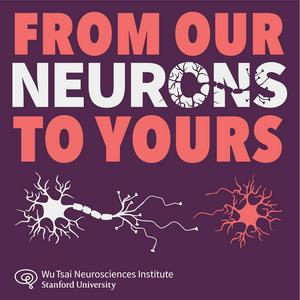This week on the show, we're have our sights set on healthy aging. What would it mean to be able to live to 80, 90 or 100 with our cognitive abilities intact and able to maintain an independent lifestyle right to the end of our days? We're joined by Beth Mormino and Anthony Wagner who lead the Stanford Aging and Memory Study, which recruits cognitively healthy older adults to understand what makes their brains particularly resilient — and how more of us could join them in living the dream of healthy aging.Learn MoreStanford Aging and Memory Study (SAMS)Stanford Memory LabMormino LabFurther ReadingAlzheimer's 'resilience signature' predicts who will develop dementia—and how fast (Knight Initiative for Brain Resilience, 2025)Latest Alzheimer's lab tests focus on memory loss, not brain plaques (NPR, 2025)ReferencesTrelle, A. N., ... & Wagner, A. D. (2020). Hippocampal and cortical mechanisms at retrieval explain variability in episodic remembering in older adults. eLife, 9:e55335. doi: 10.7554/eLife.55335 PDF | PMID:32469308Trelle, A. N., ..., Wagner, A. D., Mormino, E. C., & Wilson, E. N. (2025). Plasma Aβ42/Aβ40 is sensitive to early cerebral amyloid accumulation and predicts risk of cognitive decline across the Alzheimer’s disease spectrum. Alzheimer’s & Dementia, 21:e14442. PDF | PMID:39713875Sheng, J., ..., Mormino, E., & Wagner, A. D. (submitted). Top-down attention and Alzheimer's pathology impact cortical selectivity during learning, influencing episodic memory in older adults. PreprintEpisode CreditsThis episode was produced by Michael Osborne at 14th Street Studios, with sound design by Morgan Honaker. Our logo is by Aimee Garza. The show is hosted by Nicholas Weiler at Stanford's Wu Tsai Neurosciences Institute and supported in part by the Knight Iniative for Brain Resilience.Get in touchWe want to hear from your neurons! Email us at at
[email protected] if you'd be willing to help out with some listener rSend us a text!Thanks for listening! If you're enjoying our show, please take a moment to give us a review on your podcast app of choice and share this episode with your friends. That's how we grow as a show and bring the stories of the frontiers of neuroscience to a wider audience. Learn more about the Wu Tsai Neurosciences Institute at Stanford and follow us on Twitter, Facebook, and LinkedIn.

